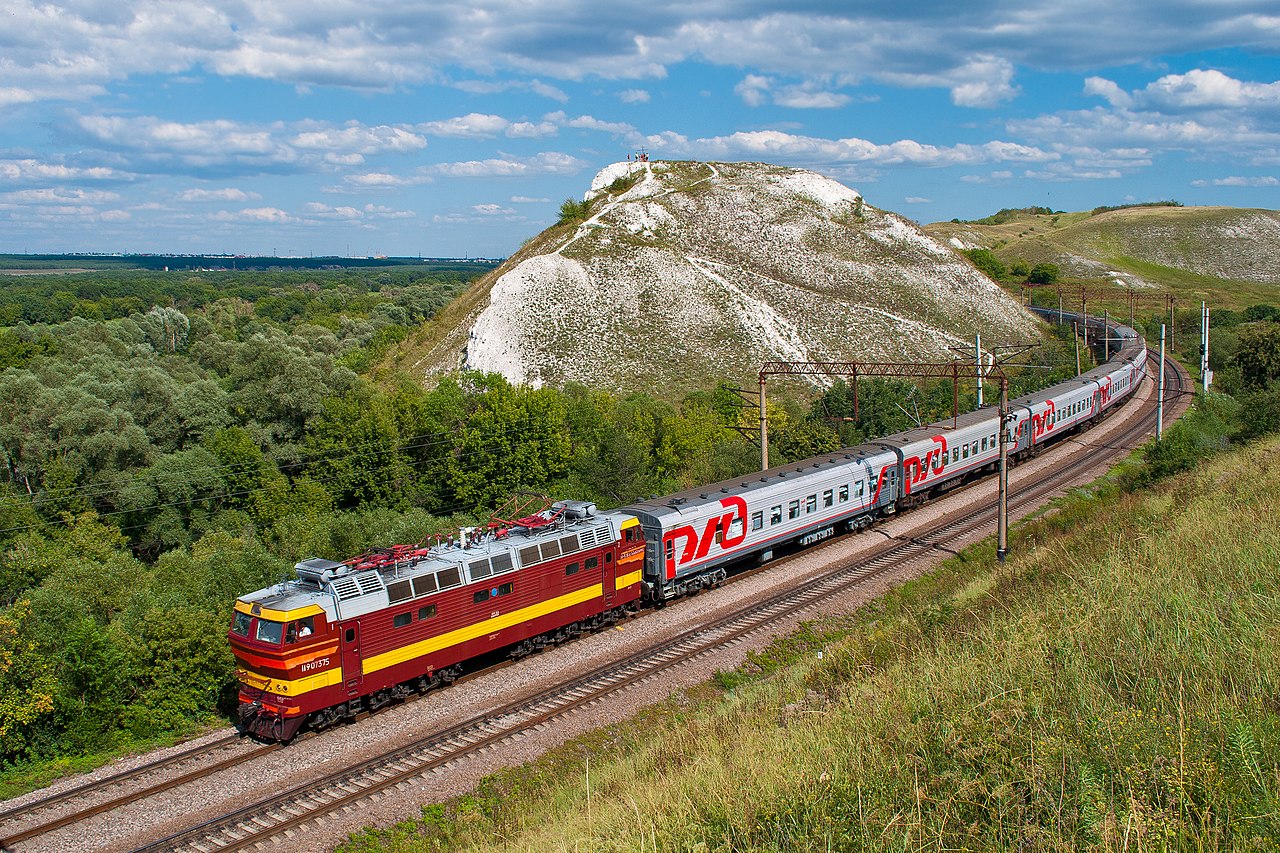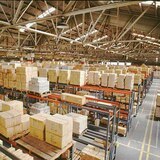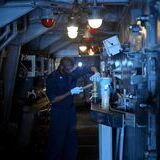The ideal quantity for a production batch
When we talk about a batch, we refer to the quantity of product which is managed during the process, and we can find two types of batches:
- Process batch: this is the target quantity to obtain after start running a process. For example, let's imagine a manufacturing order of 1000 electric fans.
- Transfer batch: It would be the quantity of product that is transferred from one station to the next one. For example, we can imagine a subassembly of the electric fans mentioned above which is manufactured in a separate production cell and that its production output is transferred in trolleys with a capacity of 30 subassemblies per trolley. In this case the transfer batch is 30.
The objective of each and every traditional company has been always to produce the highest volume possible in terms of quantity so that the economy of scale can be used and in this way obtain lower manufacturing cost. However a production system with large batch size involves always the creation of other new activities that do not add value, such us for example stock accumulation between activites and processes.
In the organiztion which look for the excelence through the application of Lean Manufacturing concepts, it's observed how the objective here is to move the minimum quantity of material in the transfer batches so that more value is generated to the final customer, who will receive the product requested earlier and also in the company the stock will be reduced.
Big infrequent trains or small frequent trains?
Let's imagine now that you are a train passenger which wants to move from point A to B, and you can choose two options:
- Option 1: Four big trains that run every three hours and with a capacity of one thousand passengers.
- Option 2: Forty small trains that run every eighteen minutes with a capacity of one hundred passengers.

It can be oberved that both options cover the same timeframe and number of passengers.
- In the option 1, the number of passengers will be 4 x 1000 = 4000 passengers during 4 x 3 = 12 hours.
- In the option 2, the number of passengers will be 40 x 100 = 4000 passengers during 40 x 18 /60 = 12 hours.
To simplify the problem, we will suppose that the train passenger capacity is always fulfilled.
The schedule of the trains will be as shown below:
| Option 1 | Option 2 | |
|---|---|---|
| 10:00 | ||
| 10:18 | Train 1 | |
| 10:36 | Train 2 | |
| 10:54 | Train 3 | |
| 11:12 | Train 4 | |
| 11:30 | Train 5 | |
| 11:48 | Train 6 | |
| 12:06 | Train 7 | |
| 12:24 | Train 8 | |
| 12:42 | Train 9 | |
| 13:00 | Train 1 | Train 10 |
| 13:18 | Train 11 | |
| 13:36 | Train 12 | |
| 13:54 | Train 13 | |
| 14:12 | Train 14 | |
| 14:30 | Train 15 | |
| 14:48 | Train 16 | |
| 15:06 | Train 17 | |
| 15:24 | Train 18 | |
| 15:42 | Train 19 | |
| 16:00 | Train 2 | Train 20 |
| 16:18 | Train 21 | |
| 16:36 | Train 22 | |
| 16:54 | Train 23 | |
| 17:12 | Train 24 | |
| 17:30 | Train 25 | |
| 17:48 | Train 26 | |
| 18:06 | Train 27 | |
| 18:24 | Train 28 | |
| 18:42 | Train 29 | |
| 19:00 | Train 3 | Train 30 |
| 19:18 | Train 31 | |
| 19:36 | Train 32 | |
| 19:54 | Train 33 | |
| 20:12 | Train 34 | |
| 20:30 | Train 35 | |
| 20:48 | Train 36 | |
| 21:06 | Train 37 | |
| 21:24 | Train 38 | |
| 21:42 | Train 39 | |
| 22:00 | Train 4 | Train 40 |
How many passengers will leave during the first two hours?
Let's take as interval of first two hours that one which gos from 10:00 to 12:06:
- In the option 1, the number of passengers wich have started the journey is 0, because the train has not yet left.
- In the option 2, the number of trains that have left during that timeframe is seven, so having in mind their passenger capacity, 7 x 100 = 700 passengers have already started their journey.
How many people is accumulated waiting the train during the first two hours?
Let's see now the number of persons that are waiting in the platform:
- In the first option, there are 700 persons wating for the train that leaves at 13:00.
- In the second option, the number of persons that can be waiting for the train is 100 taking into account the scenario in which all the persons have missed the train that left at 12:06.
How much money has the train company earned during first two hours?
If we suppose that the ticket cost is 10 dollars and that is paid in the moment that people enter to the train:
- In the big trains option, the train company has earned zero dollars.
- In the small trains option, train company has earned 7 x 100 x 10 = 7000 dollars.
What option has more added-value for the final customer?
It's fully clear that is option 2, the one with the small frequent trains because as it has been demonstrated the waiting time for the passengers is much lower and the value stream will be much more regular and fast to the final customer.
In addition to this Además it should be taken into consideration that our "cash-flow" will be much more regular in the case of small frequent trains because for the same timeframe we have collected money 40 times versus the 4 times of the big infrequent trains.
Let's move the trains example concept to manufacturing
Let's imagine that a company which produces donuts, and that we are in one of the stages of the production in which donuts are going out of the automatic fryer, with a cycle time of 1 donuts each 10 seconds. The next process consist of the packaging of the donuts to ship it directly to the final customer. The price for each donuts is of 2 euros. We have two options:
- Option 1: Place the donuts in a large trolley with trays with capacity for 1000 donuts per trolley. Transfer batch = 1000.
- Option 2: Place the donuts in small trolley with capacity for 50 donuts. Transfer batch = 50.

How many donuts are packaged during the first 30 minutes (1800 seconds)?
- In option 1, having the big trolley fullfilled will take 1000 x 10 = 10000 seconds, which it's much greater than the 1800 seconds, so as the trolley is not fulfilled 100% it will not be moved to the packaging station and zero donuts will be packaged.
- In option 2, to fill in each small trolley takes 50x10 = 500 seconds, so aproximately, taking into account some seconds of transport between automatic fryer and packaging station, 150 donuts could be packaged.
How many donuts are accumulated after the first 30 minutes?
Here we refere to stock present in the WIP (Work-In-Process). This stock is a manufacturing cost which has not been yet traduced into revenue for the company and it worth to be mentioned that this stock requires some additional cost related to its management, so it creates activities which do not add value. We wil talk in detail about this in other posts.
- In the first option, there were 1800 / 10 = 180 donuts accumulated as WIP. This WIP will continue growing until reaching the trolley capacity of 1000 units.
- In the second option, there could be as maximum 50 donuts.
How much money will the company earn after the first 30 minutes?
Let's suppose that final customer pays the donuts just after it leaves the packaging section and we will not take into account that cycle time to simplify the problem. Therefore:
- In the first option, zero donuts have reached the packaging section, so the income here is of 0 dollars.
- In the second option, the income will be of 150 x 2 = 300 dollars in those 30 minutes.
What would be the most favourable option?
The most favourable option would be the second one, because as we can see is the one which gives the final customer the fastest response, minimizes the stock between stations (WIP) and has the best cash-flow.
Conclusions
The lean management model understands that to add value the product needs to be processed in small sized batches with more frequency, getting to the point of proposing to move the product unit by unit if possible.









